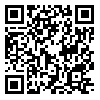Volume 4, Issue 1 (2014)
Naqshejahan 2014, 4(1): 17-26 |
Back to browse issues page
Download citation:
BibTeX | RIS | EndNote | Medlars | ProCite | Reference Manager | RefWorks
Send citation to:



BibTeX | RIS | EndNote | Medlars | ProCite | Reference Manager | RefWorks
Send citation to:
Kalantari Khalilabad H, Haghi M, Dadkhah M. Social Components of Islamic-Iranian Urban Planning Pattern. Naqshejahan 2014; 4 (1) :17-26
URL: http://bsnt.modares.ac.ir/article-2-10096-en.html
URL: http://bsnt.modares.ac.ir/article-2-10096-en.html
1- Associate Professor, Institute of Culture, Art and Architecture, Tehran, Iran
2- Student of Master of Urban Planning, Tehran University of Art, Tehran, Iran
3- Student of Master of Urban Design, Isfahan Art University, Isfahan, Iran
2- Student of Master of Urban Planning, Tehran University of Art, Tehran, Iran
3- Student of Master of Urban Design, Isfahan Art University, Isfahan, Iran
Abstract: (12809 Views)
Targeting followed by pattern making and planning to reach to goals is a necessity in all societies. Urban planning, as a subject expressing interactions between mankind, culture, living style and environment, plays an important role in reaching to the Islamic society goals along with keeping the original identity and promoting the culture and ethics, and consequently is very important in preparing a local model based on the Islamic teachings appropriate to the Islamic-Iranian context. Islam has paid special attention to social issues; just do not discuss individual aspects only. Way to achieve prosperity has been the establishment of an Islamic community and Change and growth, resulting in a society where people of all decisions and activities have been. In the Quran, Allah does not change the destiny of any nation unless they themselves. Issues such as community participation, social justice and components - such as these are placed on the social dimension of the Quran and hadiths emphasize. On the other hand Iran has long ago been important social issues and it has Construction of public buildings in the city and had a significant role. In this paper, after reviewing the literature about the social aspects of urban planning, we explained the social components of Islamic-Iranian urban planning pattern of progress. Accordingly, factors like security, social justice, health, neighborhood etc. were introduced as the important elements in social considerations of Islamic-Iranian urban planning pattern, based on Islamic teachings and Islamic-Iranian urban planning history and background .Each of the components of the urban social Iran - Islamic has a different degree of importance,some components may all components in its place and Or even creator them to be. The components and their corresponding degree of importance based on Islamic perspectives are examined. The social concepts such as privacy, health, social justice, security, peace and tranquility and also emphasized the teachings of Islam and the Islamic Republic of Iran has been in the planning And can serve as guides and tips for Islamic and Iranian urban spaces, enhanced quality of life, increased social interaction, participation of residents in the neighborhood, social justice and economic prosperity can be used. Create a semantic framework that is based on the principles expressed in the social body based on the ideas of God and to lead. Therefore, the physical space of architecture and urbanism in shaping the framework and components manufacturer must identify and examine their relationships and to build on the structure of the physical space of cities. Urban planning, urban design, architecture and industrial design matters and social climate will affect the Iranian Islamic cities. These components are not only social prosperity,social equity,increase physical qualities, enhancing the sense of belonging to the environment, but also contribute to the increased value of land, recreating the old quarters of cities and economic issues influence is remarkable.Urban pattern recognition component of Islamic and Iranian decision-makers and decision-makers, the public,and what to get rid of the confusion of spiritual and material life of man,it is important to define it.
Keywords: Islamic-Iranian Urban Planning Pattern, Social Components, Urbanism, Contemporary Architecture, Sustainability
Article Type: Analytical Article |
Subject:
Fuel Technology
Received: 2014/05/25 | Accepted: 2014/03/21 | Published: 2014/09/16
Received: 2014/05/25 | Accepted: 2014/03/21 | Published: 2014/09/16
| Rights and permissions | |
 |
This work is licensed under a Creative Commons Attribution-NonCommercial 4.0 International License. |








